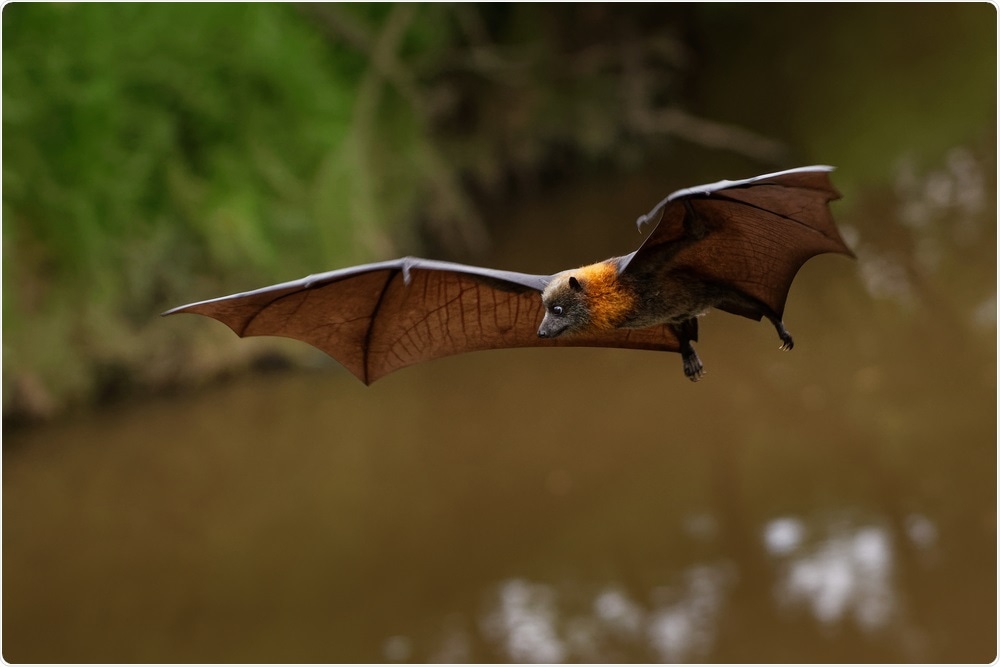Scientists around the world conduct extensive research to identify and characterize viruses to prevent future pandemics. The ongoing coronavirus disease 2019 (COVID-19) pandemic has been caused by a novel coronavirus called severe acute respiratory syndrome coronavirus-2 (SARS-CoV-2).
To date, COVID-19 has claimed more than 4.76 million lives and caused massive economic losses around the world. Therefore, it is extremely important to continuously identify viruses with the potential to cause pandemics.
 Study: Closest known relatives of virus behind COVID-19 found in Laos. Image Credit: Martin Pelanek / Shutterstock.com
Study: Closest known relatives of virus behind COVID-19 found in Laos. Image Credit: Martin Pelanek / Shutterstock.com
New viruses similar to SARS-CoV-2
A new study reveals that scientists have found three viruses in bats in Laos that exhibit similar characteristic features as SARS-CoV-2. These viruses were discovered by Marc Eloit, a virologist at the Pasteur Institute in Paris, and his colleagues in France and Laos.
In this study, researchers collected saliva, feces, and urine samples from three Rhinolophus bat species in caves in northern Laos. The researchers revealed that these viruses were found to be 95% identical to SARS-CoV-2 and were named BANAL-52, BANAL-103, and BANAL-236.
Eloit and his team of researchers have also shown the manner in which the receptor-binding domains (RBD) of the newly found viruses attach to the angiotensin-converting enzyme 2 (ACE2) receptor in human cells is similar to that of some of the early variants of SARS-CoV-2. They have cultured BANAL-236 in cells and are plan to determine its pathogenicity using animal models.
Evidence of natural origin of SARS-CoV-2
The partial similarity in the genetic sequences of these viruses reinforces the belief that SARS-CoV-2 has a natural origin and did not escape from laboratories. The knowledge of the existence of numerous viruses that can infect humans has nurtured fear amongst people.
David Robertson, a virologist at the University of Glasgow, stated that this finding is “fascinating, and quite terrifying.” The most concerning aspect of these viruses is that they have similar RBDs to the SARS-CoV-2; hence, they can infect human cells. In the case of SARS-CoV-2, the RBD binds with ACE2 of the host cell to establish infection.
Edward Holmes, a virologist at the University of Sydney in Australia also explained why people speculated that SARS-CoV-2 had been created in the laboratory. He said initially when this virus was sequenced, researchers found that the RBD did not seem familiar; thus, the idea of SARS-CoV-2 being created in the laboratory began gaining prominence.
However, the genomic similarities between the Laos coronaviruses discussed here and the SARS-CoV-2 defy this idea and confirm that SARS-CoV-2 existed in nature. This finding has also convinced other researchers including Linfa Wang, a virologist at Duke–NUS Medical School in Singapore, about the natural origin of SARS-CoV-2.
Alice Latinne, an evolutionary biologist at the Wildlife Conservation Society of Vietnam in Hanoi, stated that many studies are available that are associated with the discovery of SARS-CoV-2 strains in Thailand, Cambodia, and Yunnan in Southern China. Therefore, she suggested that Southeast Asia is a “hotspot of diversity for SARS-CoV-2 related viruses.”
Another virus closely related to SARS-CoV-2 that was discovered in the previous year is RaTG13. This virus was also found in bats in Yunnan with 96.1% overall similarity with SARS-CoV-2.
Scientists claimed that these two viruses might have shared common ancestors 40–70 years ago. The current study found that BANAL-52 and SARS-CoV-2 share an overall similarity of 96.8%.
Generally, viruses swap ribonucleic acid (RNA) segments with one another through a process known as recombination. Recombination in viruses occurs quite frequently, such that different components of the genome contain different evolutionary histories. According to Spyros Lytras, an evolutionary virologist at the University of Glasgow, a segment of BANAL-103 and BANAL-52 genome could have been shared with the SARS-CoV-2 genome less than a decade ago.
Conclusion and future research
The most important aspect of the present study is that it provided insights into the origins of the ongoing COVID-19 pandemic. However, there are some unanswered questions.
The Laos viruses lack the furin cleavage site on the spike protein, which assists the invasion of SARS-CoV-2 and other coronaviruses into human cells. Another missing link is to how the progenitor of SARS-CoV-2 could have reached Wuhan in central China, where this virus was first reported. Hence, scientists need to further clarify how this virus reached Wuhan via intermediate animals.
Recently, a new preprint publication was released on Research Square, which sampled around 13,000 bats between 2016 and 2021 in China and concluded that coronaviruses from bats are rare in this nation. The corresponding author of this study declined to respond to Nature’s questions about the findings, as their study is still under review. According to Wang, both studies could be extremely important to shed light on the origins of the ongoing pandemic.